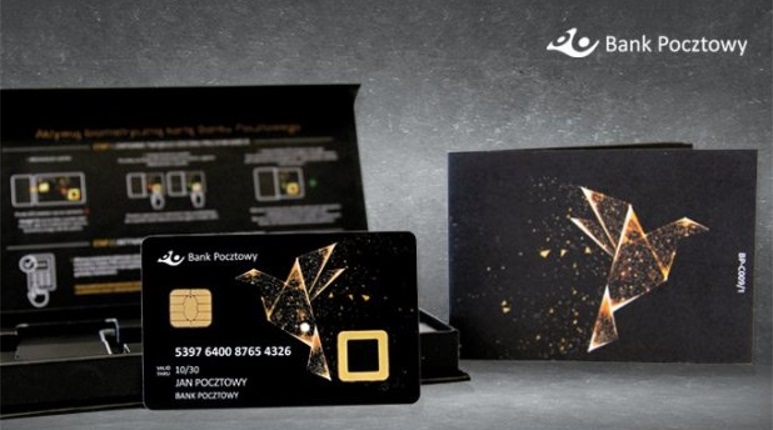
Since 20th of December, Poland’s first biometric card is available for corporate customers of Bank Pocztowy. The solution was designed by Thales which not only developed the card, but is also responsible for its packaging and distribution.
„When paying with this card, the transaction is authorised through biometric verification of the cardholder’s fingerprint, regardless of the amount,” according to the press release. „This authentication method makes it impossible for a third party to use the card, so a card which has been stolen or lost becomes useless,” the company said.
Also, the fingerprint reference data are securely stored in the chip of the card. They are neither sent to bank servers, POS terminals or ATMs, which guarantees the complete privacy of the owner.
This project, which aimed to introduce the innovative mean of payment, lasted five months and involved cooperation between Bank Pocztowy, Fiserv Polska S.A., Mastercard and Thales. The latter provides a comprehensive offer, and apart from developing the card with a reader for biometric fingerprint encoding, it furnishes modern packaging, product personalization and its distribution to final users.
The ongoing COVID-19 pandemic reduces cash circulation and the latest research shows that Poles are definitely part of this trend1. In addition, card payments account for 62% of all transactions in Poland2 &3. The new payment card using biometric authentication enables modern, fast and secure cashless payments.
The new product, currently available for corporate customers of Bank Pocztowy, will also be targeted at small and medium-sized enterprises (SMEs) in January 2022. The card is a particularly convenient alternative for business account holders. The transactions with EMV biometric card create a mobile payment experience, however, without the need to register the card e.g. in a mobile application. In addition, the biometric card will never be discharged. It gets all the energy it needs from the Point-of-Sales terminals for each transaction and never relies on a battery.
The biometric Mastercard card offered to Bank Pocztowy’s customers has a special fingerprint sensor designed to work better than mobile fingerprint sensors, as its performances have been homologated for the first time in the industry by independent and Mastercard-accredited labs.
In order to realize the transaction, the cardholder needs to place their finger on a sensor. If the biometric data matches the one recorded previously, the light on the card turns green and the payment is processed. In case a fraudster wants to use the card, the cardholder assets are protected: the light on the card turns red and the fingerprint-based transaction is rejected.
„Thanks to extensive and fruitful cooperation with our partners, this ambitious project has been successful and today Bank Pocztowy can offer the first EMV biometric card to Polish customers. It is a breakthrough event in the field of cashless payments in Poland. So far, in Europe this modern solution could only be used by French customers,” says Agata Kontrym-Woś, Member of the Board, Sales Director Banking & Payment Services, Thales DIS Poland.
______________
1) National Bank of Poland report (April 2021) „Zwyczaje płatnicze w Polsce w 2020 r. Podstawowe wyniki badania”: nearly 35% of respondents declared a change in payment habits. Nearly 82% of them use cash less frequently (https://www.nbp.pl/systemplatniczy/zwyczaje_platnicze/zwyczaje_platnicze_Polakow_2020.pdf).
2) Survey conducted in October 2020 by Pollster resarch centre on behalf of the Warsaw Banking Institute (https://www.wib.org.pl/warto-bezgotowkowo-2020-pandemia-zmienia-zwyczaje-platnicze-polakow/).
3) Acording to the „Informacja o kartach płatniczych” of the National Bank of Poland for the second quarter of 2021, the number of non-cash transactions using payment card increased by 32% compared to the same period in 2020 and by 25% compared to 2019 (https://www.nbp.pl/systemplatniczy/karty/q_02_2021.pdf).
Banking 4.0 – „how was the experience for you”
„To be honest I think that Sinaia, your conference, is much better then Davos.”
Many more interesting quotes in the video below: